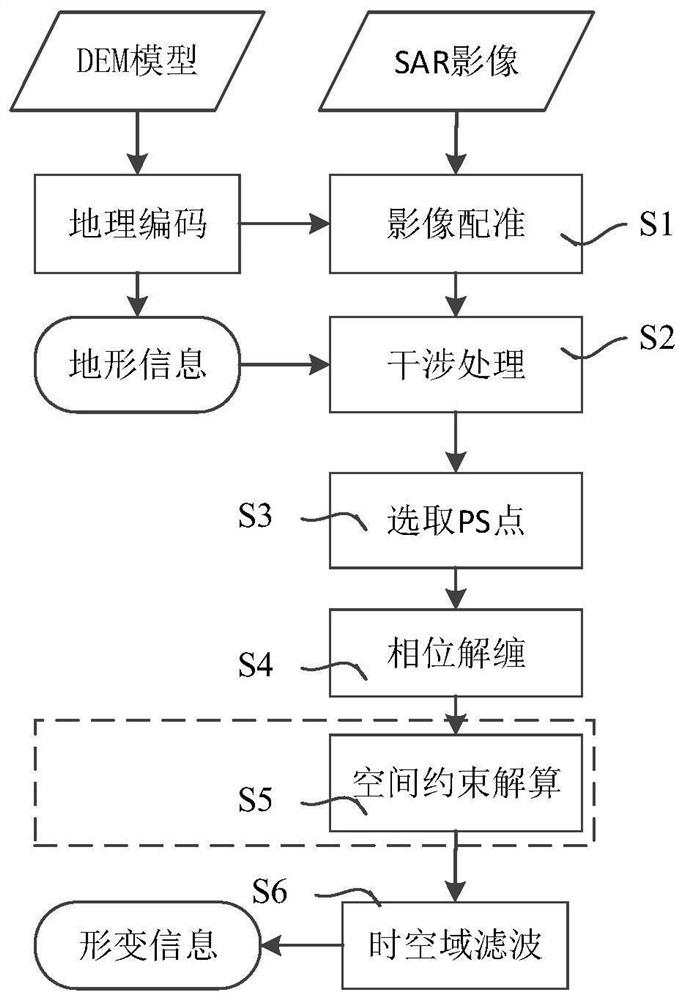InSAR deformation monitoring method based on spatial constraint
A space constraint and deformation technology, applied in the direction of measuring devices, radio wave measurement systems, radio wave reflection/reradiation, etc., can solve the problems of estimated parameter influence, undifferentiated terrain parameters and deformation parameters, estimated parameter errors, etc., to achieve The effect of improving accuracy and ensuring accuracy
- Summary
- Abstract
- Description
- Claims
- Application Information
AI Technical Summary
Problems solved by technology
Method used
Image
Examples
Embodiment
[0084] Such as figure 1 As shown, an InSAR deformation monitoring method based on space constraints includes the following steps:
[0085] S1. Data acquisition and preprocessing. The original single-view complex images are obtained through the spaceborne radar satellite, and the external DEM is used for image registration and geocoding. Among them, after the image registration processing, all images are located in the same coordinate frame, and the geocoding is performed. The elevation information of the image can be obtained, and the specific process of image registration is as follows:
[0086] S1-1. Cutting and splicing the original image according to the scope of the monitoring area;
[0087] S1-2. Using external DEM to register images, the method based on geometric registration is independent of SAR image data, not affected by data quality, and the registration error is consistent, so the registration accuracy can be relatively high in complex terrain. Stable, registrat...
PUM
 Login to View More
Login to View More Abstract
Description
Claims
Application Information
 Login to View More
Login to View More - R&D
- Intellectual Property
- Life Sciences
- Materials
- Tech Scout
- Unparalleled Data Quality
- Higher Quality Content
- 60% Fewer Hallucinations
Browse by: Latest US Patents, China's latest patents, Technical Efficacy Thesaurus, Application Domain, Technology Topic, Popular Technical Reports.
© 2025 PatSnap. All rights reserved.Legal|Privacy policy|Modern Slavery Act Transparency Statement|Sitemap|About US| Contact US: help@patsnap.com



